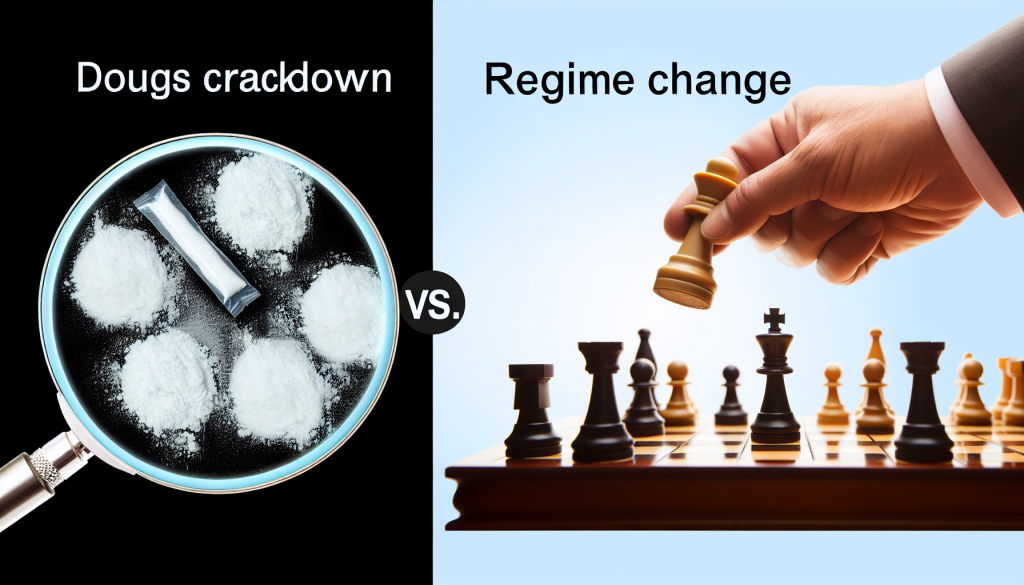The Growing Military Tensions in the Caribbean: The US, Venezuela, and the Stakes Involved
For two months, the Caribbean Sea has become the spotlight for a dramatic military buildup spearheaded by the United States. This is no small matter; it marks the largest deployment in decades, with a formidable array of warships, fighter jets, bombers, marines, drones, and spy planes now positioned in the region. The implications are staggering, not just for the United States and Venezuela but for the broader geopolitical landscape.
The Nature of the Deployment
The United States has dispatched long-range B-52 bombers, conducting “bomber attack demonstrations” just off the coast of Venezuela. In a high-stakes move, the Trump administration has authorized the CIA to operate within Venezuelan territory. This robust military presence includes the world’s largest aircraft carrier, the USS Gerald R. Ford, further escalating tensions in an already volatile situation.
Allegations of Drug Trafficking
The U.S. government claims to have neutralized dozens of individuals aboard small vessels alleged to be involved in narcotics trafficking, labeling these operations as part of a crusade against drug cartels. However, critics argue that no conclusive evidence has been made public to substantiate these claims. According to experts, while the U.S. characterizes its actions as a “war on drugs”, many believe the underlying motive leans more towards regime change than narcotics enforcement.
Expert Insights on the Military Buildup
Experts like Dr. Christopher Sabatini from Chatham House argue that this military build-up is not merely about drugs. Instead, it appears to be a calculated show of force designed to instill fear within the Venezuelan military and President Nicolás Maduro’s inner circles. The intent, he suggests, could be to encourage members of Maduro’s government to act against him.
Tracking U.S. Operations
BBC Verify has been monitoring the U.S. military’s movements in the region, utilizing publicly available tracking data, and satellite imagery. As of late October, they identified 10 U.S. military vessels, including guided missile destroyers and amphibious assault ships, along with oil tankers designed for refueling operations at sea—an indication of sustained U.S. presence and potential operational readiness.
The $50 Million Bounty: Testing Loyalties
The stakes have risen with the U.S. offering a $50 million reward for information leading to Maduro’s arrest, effectively encouraging defectors from within his loyal inner circle. However, this substantial bounty has yet to yield any significant defections, raising questions about the loyalty of those surrounding Maduro.
Some Venezuelan political analysts, such as Jose Ignacio Hernández, argue that this amount is trivial for Venezuela’s elites, who have built significant wealth through corruption in an oil-rich environment. High-ranking military officials may also be cautious due to their involvement in illicit activities, leaving them hesitant to betray Maduro without guarantees of immunity.
The Drug Narrative: More Than Meets the Eye
While Trump has insisted that these military actions target narcotics traffickers—with specific allegations of a vessel “loaded up with mostly fentanyl”—experts note that fentanyl is predominantly manufactured in Mexico and trafficked into the U.S. through other means. Dr. Sabatini contends that the framing of this as a “war on drugs” is more a rhetorical weapon against Maduro rather than a genuine operational objective.
Furthermore, the drugs central to this narrative—cocaine and fentanyl—are not primarily produced in Venezuela, thereby raising skepticism about the U.S.’s stated motives.
Building U.S. Sea and Air Strength
In tandem with the recent military maneuvers, the Pentagon has significantly bolstered U.S. naval and air assets in the Caribbean. Key assets like the USS Gerald R. Ford carrier strike group were deployed for potential multi-dimensional operations, ranging from surveillance to potential strikes. Images and satellite tracking disclosed various military aircraft, including advanced F-35 jets, indicating a serious commitment to bolstering U.S. air capability in the region.
The Potential Role of the CIA
When questioned about whether the CIA has been given the green light to take out Maduro, Trump’s evasiveness only heightened curiosity. The CIA’s history of covert operations in Latin America casts a long shadow over any potential operations they might undertake in Venezuela, whether through sabotage, funding opposition, or direct military action.
The Biden administration’s approach raises several questions. Will the U.S. seek to target specific locations associated with drug trafficking, or even consider a more aggressive plan involving direct military engagement? Such actions would echo past interventions in Latin America and could face backlash from the region and the international community alike.
Final Thoughts
As tensions simmer in the Caribbean, the motivations behind the U.S. military deployment remain a point of contention. While this might ostensibly be termed a battle against drug trafficking, the underlying currents suggest a broader geopolitical strategy focused on undermining a regime deemed undesirable by U.S. interests. With strategic assets in place and the potential for escalation looming, the eyes of the world are increasingly trained on the Caribbean Sea. What comes next remains uncertain, yet the stakes are undeniably high for all parties involved.

